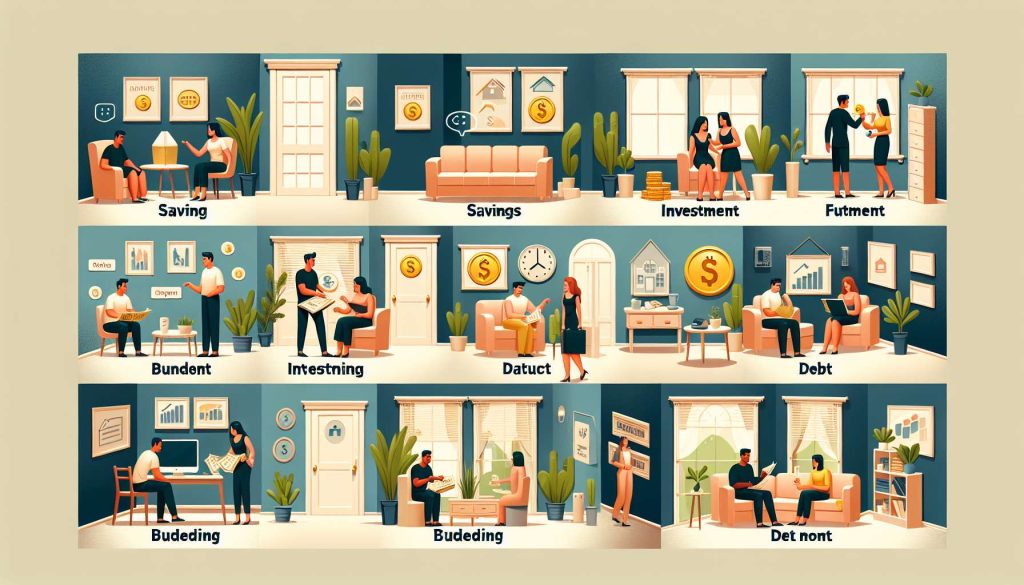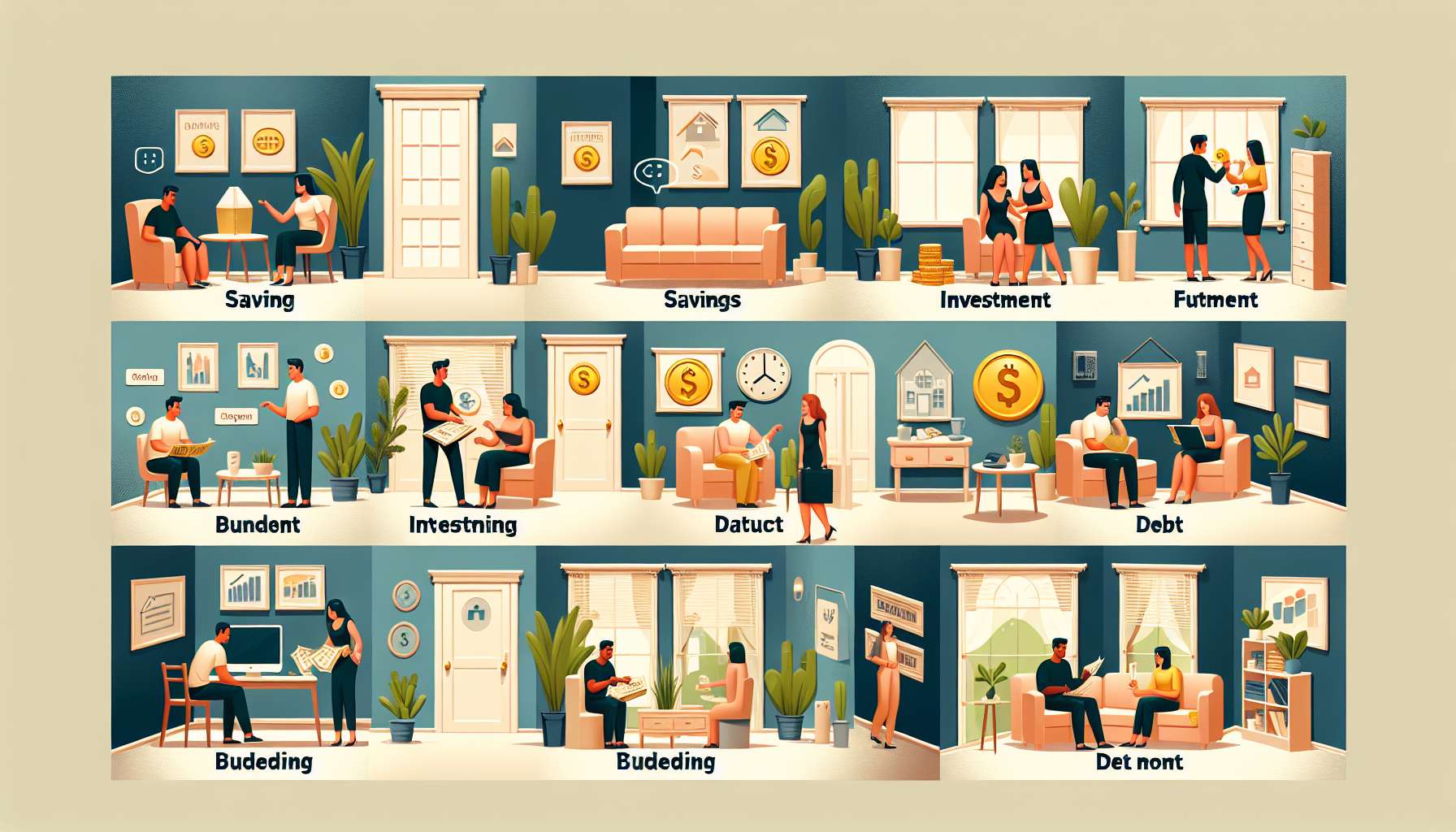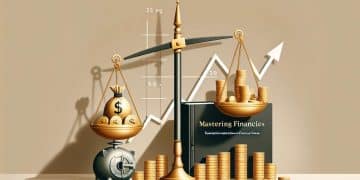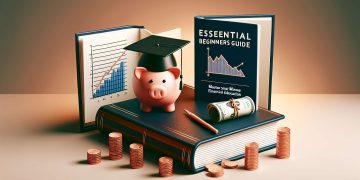Guide to Boosting Financial Literacy for Long-Term Security

Anúncios

In our rapidly evolving world, the ability to manage money effectively is not just a necessity—it’s an essential life skill. The principles of financial literacy, encompassing budgeting, saving, investing, and debt management, form the cornerstone of lifelong financial stability.
Whether you are just beginning to take control of your finances or aiming to improve existing habits, a solid understanding of financial literacy can profoundly transform your financial health and overall quality of life. It’s not merely about surviving economically; it’s about thriving and creating a secure, prosperous future.
Financial literacy empowers individuals to make informed and confident decisions about money. From understanding complex topics such as investments and retirement planning to mastering daily spending habits, financial education is the foundation for success in both personal and professional realms.
It acts as a safeguard against common pitfalls—overspending, poor saving habits, and falling prey to financial scams. By investing time in learning how money works, you not only protect yourself from financial instability but also unlock opportunities for wealth growth, independence, and peace of mind.
In today’s dynamic global economy, those who understand financial systems hold a distinct advantage. Financial literacy distinguishes those who merely get by from those who achieve lasting prosperity.
It equips individuals to navigate financial landscapes strategically, make thoughtful decisions, and apply tested principles that lead to measurable success. Ultimately, financial literacy is a lifelong pursuit—starting with fundamental money management and expanding into complex financial strategies designed to secure and enhance your future.
1. Building a Solid Financial Foundation
1.1 The First Step: Knowing Where You Stand
A strong financial foundation begins with self-awareness. Understanding your financial situation—your income, expenses, debts, and assets—is the first step toward meaningful change. Start by compiling a detailed record of your income sources, from your salary to side jobs and passive income. Next, track all monthly expenses, dividing them into categories such as essentials (housing, utilities, groceries) and non-essentials (entertainment, dining out, subscriptions).
By analyzing this data, you’ll identify spending patterns and uncover opportunities for improvement. Awareness is empowerment: once you know where your money goes, you can redirect it toward achieving financial goals rather than watching it disappear aimlessly.
1.2 Crafting a Realistic Budget
Once you understand your financial inflows and outflows, the next crucial step is budgeting. A budget acts as your personal financial blueprint—a roadmap that aligns your income with your goals. One of the most practical budgeting methods is the 50/30/20 rule:
-
50% of your income goes to needs (rent, bills, groceries).
-
30% to wants (leisure, hobbies, travel).
-
20% to savings or debt repayment.
This balanced approach encourages financial discipline while maintaining flexibility for enjoyment and personal growth. Regularly revisit your budget as circumstances change—such as salary increases or new expenses—to ensure it stays relevant and effective.
Budgeting is not about restriction but empowerment. It provides clarity, prevents overspending, and ensures that every dollar is used intentionally.
2. Understanding Debt and Managing It Wisely
2.1 Good Debt vs. Bad Debt
Debt is often perceived negatively, but not all debt is harmful. In fact, good debt, such as student loans, business investments, or home mortgages, can serve as a strategic tool for building wealth. These forms of debt typically come with lower interest rates and contribute to long-term value.
In contrast, bad debt, like high-interest credit cards or personal loans used for consumption, can erode financial stability. The key lies in understanding which debts have potential to appreciate your assets and which drain your income through compounding interest.
Being financially literate means making borrowing decisions that support your broader goals, not hinder them.
2.2 Strategic Debt Reduction Techniques
To regain control over existing debt, adopt a structured repayment strategy. Two proven methods are:
-
The Snowball Method: Focus on paying off your smallest debts first. As each balance is cleared, you gain psychological momentum to tackle larger ones.
-
The Avalanche Method: Prioritize debts with the highest interest rates to minimize overall costs.
Both methods are effective; the best one depends on your personal motivation and financial circumstances. Regardless of which you choose, consistency and discipline are key to becoming debt-free and strengthening your credit health.
3. Saving: The Cornerstone of Financial Stability
3.1 The Purpose of Saving
Saving is the backbone of every sound financial plan. It provides a safety net during emergencies, supports long-term goals, and fosters independence. Without savings, even small financial shocks—like unexpected medical bills or car repairs—can spiral into debt.
Financial experts recommend maintaining an emergency fund equivalent to three to six months of living expenses. This reserve acts as your first line of defense, providing stability in uncertain times.
3.2 The “Pay Yourself First” Principle
One of the most effective saving strategies is to pay yourself first. Treat savings as a non-negotiable expense by automating transfers from your checking account to a savings or investment account as soon as you receive income. This approach builds consistency and eliminates the temptation to spend impulsively.
Consider using high-yield savings accounts to maximize returns on idle cash. Over time, compounding interest will amplify your savings with minimal effort.
4. Investing: Building Long-Term Wealth
4.1 The Power of Compound Growth
While saving preserves your wealth, investing multiplies it. The concept of compound interest—earning returns on both your original investment and accumulated interest—can dramatically expand your wealth over time. Starting early is critical: even modest investments can grow significantly over decades.
4.2 Diversifying Your Portfolio
Financial literacy includes understanding the value of diversification. Spreading investments across various asset classes—stocks, bonds, real estate, and mutual funds—reduces risk and stabilizes returns. The adage “don’t put all your eggs in one basket” perfectly encapsulates this principle.
Regularly review and rebalance your portfolio to adapt to market changes and personal goals. Staying informed about financial trends ensures your investment strategy remains resilient.
4.3 Retirement Planning
Retirement may seem distant, but preparing for it early ensures comfort and independence later in life. Contribute to tax-advantaged retirement accounts such as 401(k)s, IRAs, or Roth IRAs, depending on your country’s system. Take advantage of employer matching programs where available—they’re essentially free money toward your future.
5. The Broader Benefits of Financial Literacy
5.1 Empowerment and Confidence
Financial literacy empowers individuals to make informed, confident financial decisions. When you understand how money works, financial challenges transform from sources of stress into manageable tasks. This confidence extends beyond finances, improving decision-making in other aspects of life, from career planning to family stability.
5.2 Preventing Costly Mistakes
Educated individuals are less likely to fall victim to financial pitfalls, such as predatory lending, impulsive spending, or get-rich-quick scams. By recognizing warning signs and exercising caution, you preserve your financial health and avoid setbacks that could take years to repair.
5.3 Building Long-Term Wealth
A financially literate person understands how to grow wealth sustainably. Strategic saving and investing, coupled with disciplined spending, lead to compounding financial progress. Over time, this creates financial independence—the freedom to make life choices without monetary constraints.
5.4 Reducing Stress and Enhancing Well-Being
Money is a leading source of anxiety for many individuals and families. Financial literacy helps mitigate that stress by replacing uncertainty with clarity. Knowing how to handle your finances offers peace of mind and improves your overall emotional and mental well-being.
5.5 Supporting Career and Personal Growth
Financial competence extends to professional advancement. Understanding benefits, negotiating salaries, and managing taxes all stem from strong financial knowledge. Furthermore, individuals with sound financial habits often exhibit responsibility and leadership, traits highly valued in any workplace.
6. Cultivating Lifelong Financial Discipline
Financial literacy is not a one-time achievement—it’s an ongoing process. Economic systems evolve, and so do personal circumstances. Cultivating a mindset of continuous learning ensures you stay adaptable. Read financial publications, follow reputable experts, or enroll in online courses to keep your knowledge current.
Also, set specific, measurable financial goals—whether saving for a down payment, starting a business, or achieving early retirement. Reviewing progress regularly reinforces accountability and keeps you aligned with your long-term vision.
7. Key Characteristics of Financial Literacy
To summarize, a financially literate individual demonstrates the following traits:
-
Clear comprehension of income, expenses, and financial obligations.
-
Skillful budgeting and planned, mindful spending.
-
Effective debt management and repayment strategies.
-
Consistent saving and thoughtful investment habits.
-
Strategic financial planning and measurable goal setting.
These characteristics collectively build a framework for enduring success, providing a roadmap toward financial empowerment.
Conclusion: The Lifelong Value of Financial Literacy
Financial literacy is far more than a set of skills—it’s a form of empowerment that shapes your relationship with money and, by extension, your life. It fosters independence, confidence, and security, equipping you to make choices that align with your goals and values.
By understanding income management, mastering budgeting, eliminating debt, and investing strategically, you position yourself for lifelong success. The benefits ripple far beyond your bank account—touching your relationships, career, and personal well-being.
Ultimately, financial literacy transforms uncertainty into opportunity. It’s the key to unlocking financial freedom, ensuring that every decision you make today builds a stronger, more prosperous tomorrow. The journey begins with education—and once begun, it’s a path that continually rewards those who walk it with curiosity, discipline, and purpose.





